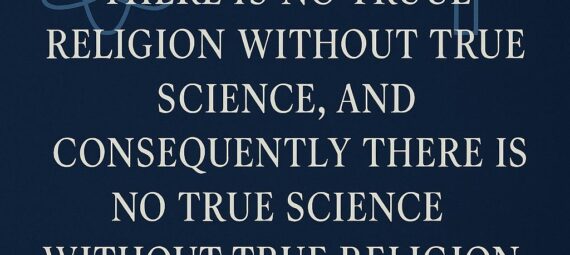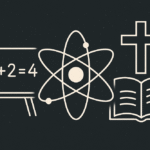In both religious and scientific communities, the domains of faith and mathematics are often kept distinct. Faith is typically viewed as belonging to the spiritual realm, centered on belief in God, revelation, and divine action. Mathematics, by contrast, is seen as the epitome of reason, logic, and certainty. Yet when we dig deeper into the philosophical underpinnings of each, an intriguing question arises: are faith and mathematics really so different?
A Biblical Definition of Faith
Let us begin with the classic biblical definition of faith, found in Hebrews 11:1:
“Now faith is the substance of things hoped for, the evidence of things not seen.”
This definition portrays faith not as blind belief, but as a conviction in the reality of things that are not directly observable. It affirms faith as an epistemic stance rooted in confidence, assurance, and expectation. In essence, it is about trusting in a reality that transcends empirical verification.
The Nature of Mathematics
Now consider mathematics. Mathematics deals with abstract entities that cannot be perceived through the senses. We do not see numbers, infinite sets, or mathematical functions. Yet mathematicians operate with great confidence in these entities. Mathematical realism, a widely held view in the philosophy of math, posits that mathematical objects exist independently of human minds. In other words, mathematics is discovered, not invented. If this is true, then mathematics, like faith, is a way of knowing things that are unseen.
Comparing the Basis
The first point of comparison is the basis of both disciplines. Traditionally, the basis of faith is said to be divine revelation or spiritual experience, while the basis of mathematics is logic and axioms. But if we assume that God is discoverable through reason, just as mathematical truths are, then the distinction begins to fade. Natural theology argues that we can know truths about God through observation and reasoning. This includes arguments like the cosmological argument, the teleological argument, and the moral argument. Each employs deductive or inductive reasoning in pursuit of theological truth. Similarly, mathematics begins with axioms that are not provable within the system but are accepted because they produce coherent and useful results. Both disciplines rest on foundational principles that are taken on trust but can be explored and tested through reason.
Assurance in Faith and Mathematics
The second comparison lies in the source of assurance. For faith, assurance comes from a combination of internal conviction, communal testimony, and sometimes personal experience. In natural theology, however, assurance is bolstered by reason and the coherence of theological systems. The same can be said of mathematics. Mathematicians derive assurance not through empirical testing, but through the elegance, consistency, and explanatory power of their equations. When a theorem fits harmoniously into an existing framework, it generates a kind of intellectual confidence. In both cases, the assurance comes not from the senses but from internal coherence and the mind’s grasp of the system.
Object of Belief
The object of faith and the object of mathematical belief also reveal profound similarities. In Christianity, faith is directed toward a God who is characterized as lawful, consistent, and unchanging. God is said to act according to divine laws, both moral and natural. This means that the universe itself is structured in a lawful, intelligible way. Mathematics likewise seeks to understand structure, order, and relation. If God is indeed a God of order, then to study mathematics is, in a sense, to study one of the languages through which God has ordered the universe. Some theologians, including early scientists like Johannes Kepler and Isaac Newton, explicitly connected their mathematical work to their faith, viewing mathematics as a way to “think God’s thoughts after Him.”
Methods of Verification
Verification is perhaps the most philosophically nuanced comparison. Neither faith nor mathematics is verifiable through empirical means in the strictest sense. Pure mathematics does not rely on experimentation. Instead, it uses internal logical structures to verify the truth of statements. Proofs are constructed within accepted frameworks to establish certainty. Similarly, theology builds doctrines upon foundational truths, such as the existence of God, the reality of sin, or the possibility of revelation. These doctrines are developed logically, even if they are not empirically testable. Thus, in both fields, verification takes place within a system. The criteria for truth are internal consistency, coherence, and sometimes explanatory power.
Systems of Thought
This leads us to a deeper philosophical point: both faith and mathematics operate within systems. In mathematics, one begins with axioms. In theology, one begins with presuppositions or articles of faith. From there, reasoning proceeds. In both cases, if the system is consistent and yields results that correspond to reality or enrich our understanding, it is seen as valid. Gödel’s incompleteness theorems even show that in any sufficiently powerful mathematical system, there will be true statements that cannot be proven within the system. This mirrors the theological claim that there are mysteries which, though reasonable, transcend full human comprehension.
Not Identical, but Strikingly Similar
This does not mean that faith and mathematics are identical. They differ in subject matter, method, and cultural role. But the epistemological parallels are striking. Both require trust in the unseen. Both value internal coherence. Both can be developed through rigorous reasoning. And both offer deep insights into the nature of reality.
Rethinking Knowledge
This convergence has implications for how we understand knowledge itself. In a culture that often pits faith against reason, or religion against science, it is enlightening to recognize that the methods of knowing in both fields are not only compatible but in some respects analogous. The dichotomy between faith and reason, often used to critique religion as irrational, is based on a shallow understanding of both faith and mathematics. When we appreciate that both involve structured, reasoned belief in the unseen, the opposition dissolves.
Trust and Coherence
This does not mean that faith is a substitute for math, or that theology can replace calculus. What it does suggest is that the human mind is capable of reaching truth through various pathways. Just as we trust in the reality of abstract mathematical objects because they yield coherent and elegant systems, we can trust in the reality of God if our theological framework yields coherence, moral insight, and experiential resonance.
If we take Hebrews 11:1 seriously, and accept that faith is “the evidence of things not seen,” then it is reasonable to consider mathematics as operating under a similar epistemological framework. Mathematics, like faith, deals with the unseen. It is discoverable, rational, and internally verifiable. If God is also discoverable and lawful, then the structure of faith and the structure of mathematical reasoning share more in common than is often acknowledged. They are not enemies. They are companions in the human search for truth.
Faith is not irrational, and mathematics is not emotionless. Both engage the full range of human faculties: reason, imagination, intuition, and even hope. When viewed in this light, the walls between the spiritual and the logical begin to crumble, revealing a more integrated vision of knowledge, one where faith and mathematics walk side by side in the pursuit of what is real, true, and good. As Brigham Young said “there is no true religion without true science, and consequently there is no true science without true religion.”





